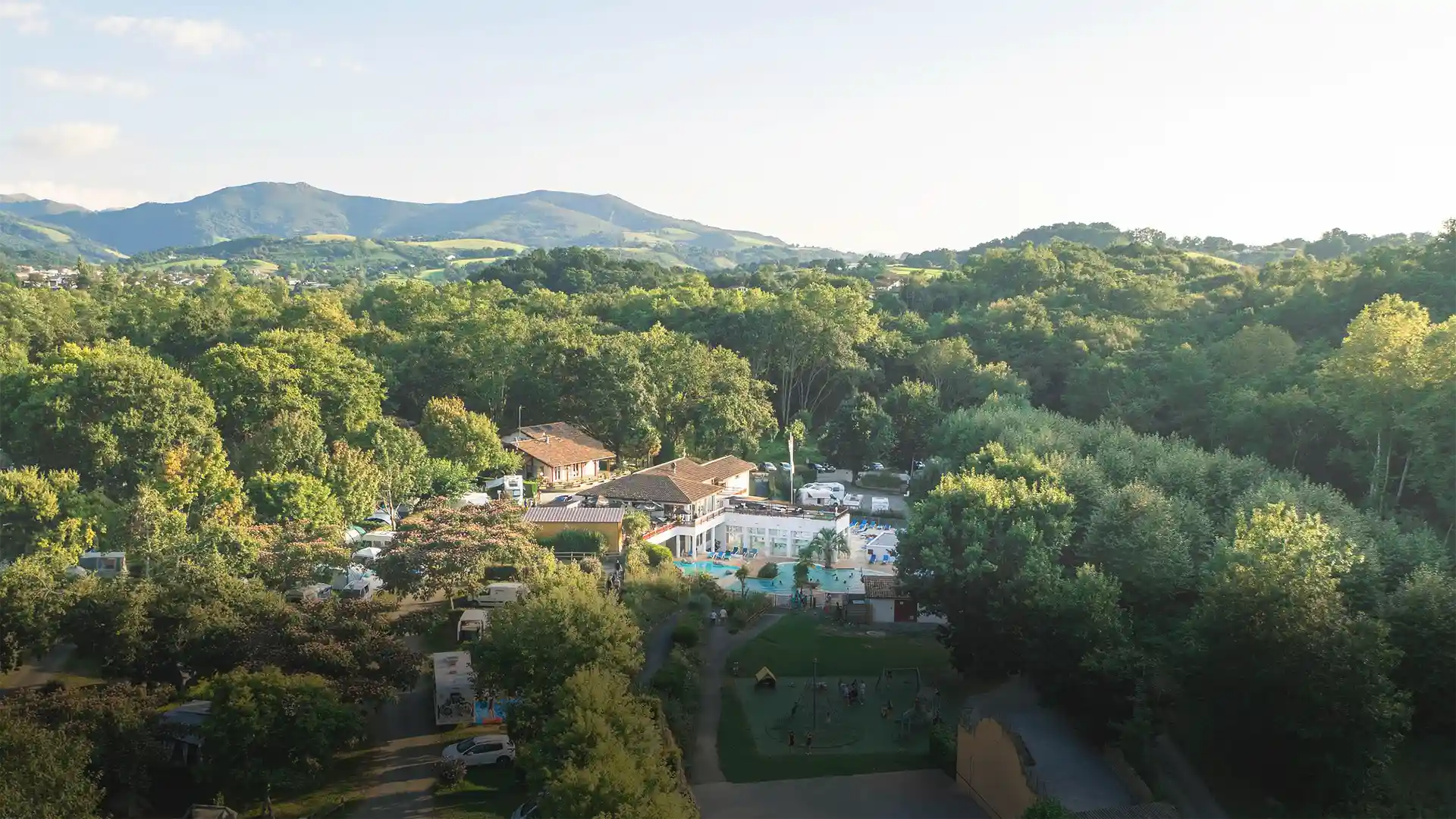Road-trip in the Basque Country – days 2, 3 and 4: hidden treasures in the mountains
Second part of our road-trip in the Basque Country. After the Basque coast, with its beaches, surf spots and small ports, we change scenery and landscapes to venture into the inland Basque country: Espelette, Aïnhoa, Sare, the peaks of Basse-Navarre, the mountains of Haute-Soule, the Aldudes valley, the vineyards ofIrouleguy… Allow 2 to 4 days to get the most out of it, taking time to stroll around, eat well and stop to take photos. Let’s go!

Espelette, Itxassou, Aïnhoa, Sare: the joy of operetta villages
Espelette is an ideal starting point for exploring the inland Basque country along mountainside roads and country lanes, discovering typical villages and fortified bastides. This is where you’ll find our Le Biper Gorri campsite. After exploring the pretty village known worldwide for its red peppers, we head for Itxassou, a peaceful village famous for its black cherries. A few kilometers away, Cambo-les-Bains, the Basque country’s only spa, is famous for the Villa Arnaga built by Edmond Rostand, author of Cyrano de Bergerac. With Mount Ursuya in your sights, you then arrive in Hasparren, a typical Basque town of colorful half-timbered houses and old farmhouses dating back to the 17th and 18th centuries. A few kilometers further north, we make our way to La Bastide Clairence, a pretty half-Basque, half-Gascony bastide founded in 1312 by King Louis 1st of Navarre and now classified as one of France’s most beautiful villages. From here, you’ll have to push on to the prehistoric caves of Isturitz and Oxocelhaya, on the Gaztelu hill in Saint Martin d’Arbéroue, Lower Navarre. Places not to be missed during your stay in the Basque Country!
To the south of Espelette, on the border between Labourd and Navarre, you’ll discover charming little villages, dapper and green, and bastides full of color and contrast. First stop: Aïnhoa, a typical Basque village, organized as a bastide and adorned with white and red half-timbered facades. The walk continues towards the small village of Sare to take the cogwheel train to the summit of La Rhune. High up on the sacred Basque mountain, at an altitude of 905 metres, pottocks, wild ponies native to the Basque country, share the mountain pastures with Manech ewes and griffon vultures. The view is splendid, offering a 360° panorama of the Basque mountains and coastal beaches. At the foot of the Rhune, Ascain, with its church, pediment and 5th-century Roman bridge, is also well worth a visit. This traditional Labourd village is renowned for its expertise in the manufacture of Basque linen. Take the opportunity to visit the weaving workshops. Since 1910, the Lartigue family has been passionately perpetuating unique craftsmanship.
Soule, in the heart of the Basque Country mountains
The smallest of the seven historic territories of the Basque Country, the province of Soule is surrounded by a superb landscape of mountains and steep valleys. This wild, unspoilt region stretches from Pic d’Orhy in the south, the highest Basque peak (2,017 m), to Hôpital Saint Blaise in the north, famous for its Romanesque church, a UNESCO World Heritage site. In between, the small mountain village of Larrau is the starting point for an excursion into the Kakuetta Gorge, an impressive 2 km-long man-made canyon, and the Holzarte footbridge overlooking the Olhadubi Gorge, suspended 180 metres above the void. If you’re afraid of heights, don’t bother!
Go 30 kilometers further north and you’ll find yourself in Mauléon-Licharre, capital of Soule and… espadrille! The ancient stronghold is crossed by the Saison river, which flows into the Gave d’Oloron, with the Bastide and fortified castle on one side, and Licharre, the old town, on the other. On the way, if you have time, stop off at the famous bastide square in Tardets, surrounded by arcades, some of which date back to the 12th century. Discover also the Herauskorritxe mythology interpretation center, then in Trois-Villes, the Château Elizabea built for Arnaud de Peyrer, Comte de Tréville, Captain of the King’s Musketeers. To reconnect with nature, take the GR 78, which links the hills of Mauléon-Licharre to the Saint-Just-Ibarre valley. A hike in the heart of the Basque Country, not the easiest, reserved for the more athletic.
Saint-Jean-Pied-de-Port, the Aldudes valley and Irouleguy vineyards
The next stage of our Basque tour takes us to Saint-Jean-Pied-de-Port, in Basse-Navarre, 40 kilometers southeast of our campsite. From Bayonne, you can take the “Route Impériale des Cimes” to Saint Jean Pied-de-Port via the hills. Nestling at the gateway to the Col de Roncesvalles, on the right bank of the River Nive, the town nicknamed “the Key to the Ports of Cise” has welcomed thousands of pilgrims and hikers on their way to Santiago de Compostela for centuries. Behind the ramparts, the fortified Basque town encloses a labyrinth of cobbled streets, lined with houses decorated with lintels carved in pink sandstone. In the center of the town stands the church of Notre-Dame-du-Bout-du-Pont, just as sumptuous as Bayonne Cathedral. But what really catches the visitor’s eye is the citadel built in the 17th century on the Mendiguren hill, a fine and rare example of a bastioned fortification reworked by Vauban.
Further into the Aldudes valley, at the foot of the Pyrenees, you’ll find the pretty village of Saint-Étienne-de-Baïgorry, Banca, Aldudes and Urepel, right in the heart of the inland Basque country. It’s also an opportunity to travel along the Irouleguy vineyard route, France’s smallest vineyard at just 250 hectares, founded in the 12th century by the monks of the Abbey of Roncevaux to supply wine to the pilgrims on their way to Compostela. Here, the Basque spirit blows through the terraced vineyards on the mountainside, and the small villages adorned with “Baigorry red” woodwork and pinkish-tinted stonework. At every hairpin bend, you can see hundreds of ewes summering in the green valleys. The Basque Country in all its splendour!


